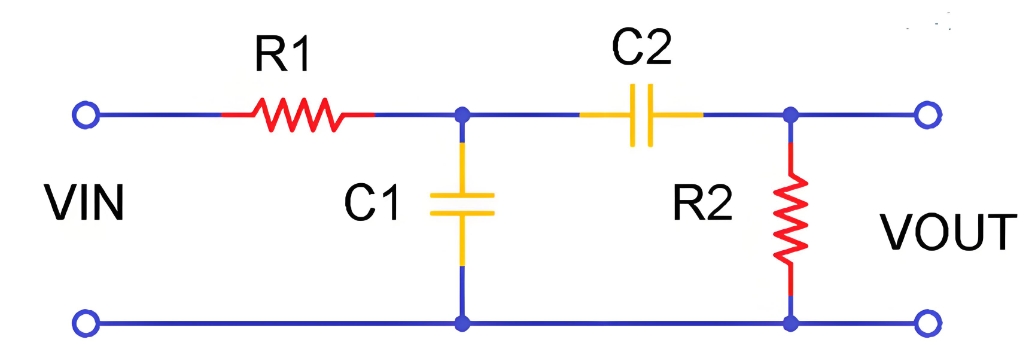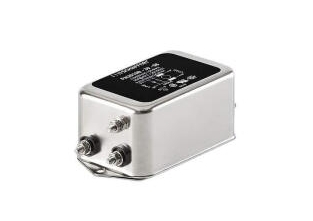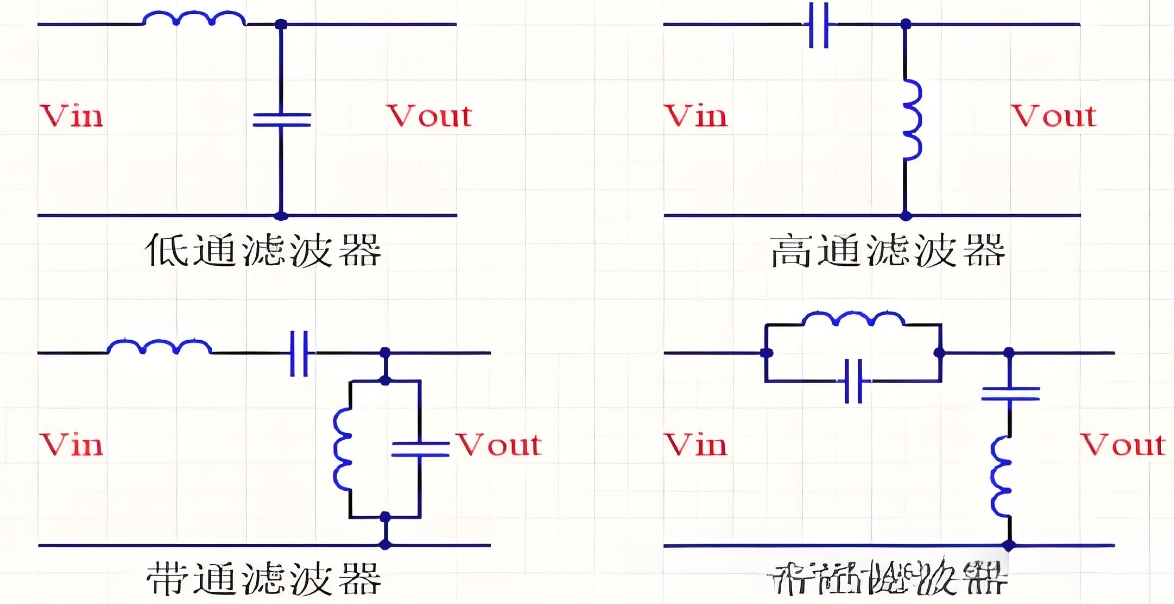What are the disadvantages of passive filters
2024-05-06 16:01:15
Passive filter is a kind of filter that does not require external power supply, and its basic components are passive components such as resistance, capacitor and inductance. With specific combinations and configurations of these components, passive filters can achieve frequency-selective processing of signals in the circuit, allowing signals in certain frequency ranges to pass through while suppressing or attenuating signals in other frequencies. This function makes the passive filter widely used in signal processing, power supply purification, harmonic suppression and other fields.

The advantages of passive filter are simple structure, low cost, reliable operation and easy maintenance, and it is suitable for the application scenario that does not need to amplify the signal. However, they may introduce certain signal attenuation and may not be practical in low frequency applications due to the need for large inductive components. Some inherent limitations of passive filters have gradually become the bottleneck of their wide application. Here's a look at the drawbacks of passive filters with INFINITECH.
The disadvantages of passive filter at present
1, fixed filtering characteristics
The design of passive filters is based on a fixed combination of inductance (L), capacitance (C), and resistance (R) components, which means that their filtering characteristics (such as cutoff frequency, passband width, etc.) are difficult to adjust once determined. In application scenarios where the filtering characteristics need to be dynamically adjusted, this steadiness becomes a significant disadvantage.
Optimization suggestion: Explore the use of adjustable components (such as variable capacitors, magnetic core adjustable inductors) or the combination of active control circuits to achieve dynamic adjustment of filter parameters.
2. Disadvantages in volume and weight issues
Large space occupancy
Due to the dependence on the physical properties of LC elements to achieve the filtering function, passive filters tend to be large, especially for low-frequency applications, and the required inductor volume is particularly significant. This not only increases the physical space requirements of the device, but can also affect the portability and installation flexibility of the system.
Optimization path: Research and development of new materials and technologies, such as nanomaterials or advanced magnetic core technology, to reduce the size of components; At the same time, the design layout is optimized and three-dimensional integration technology is used to improve the utilization rate of space.

3, loss and heat problems
Energy loss
The passive filter will cause energy loss due to the internal resistance of the resistance and inductance at work, especially in high-power applications, which will not only affect the efficiency of the system, but also generate heat and increase the burden of the cooling system.
Solution: Select low-loss materials, optimize circuit design to reduce series resistance, while strengthening heat dissipation design, use efficient thermal management materials and technologies, such as heat pipe heat dissipation, phase change materials, etc.
4. Nonlinear effects and resonance problems
Nonlinear effect
In high current or high voltage environment, the nonlinear characteristics of inductors and capacitors may lead to the degradation of filtering performance and signal distortion.
Coping strategy: Predict and compensate nonlinear effects through accurate circuit simulation and material selection; Introduction of appropriate linearization techniques, such as the use of high quality factor (Q value) components and improved core materials.
Resonance problem
The passive filter is prone to resonance under certain conditions, which not only affects the filtering effect, but also may cause damage to the system.
Solution: Perform a rigorous system analysis to ensure that resonant frequencies are avoided during design; A multi-stage filter design is used, or damping elements such as damping resistors are added to suppress potential resonance phenomena.
5. Maintenance and durability
Maintenance cost and life
Because passive components are easily affected by environmental factors (such as temperature and humidity), problems such as aging and parameter drift may occur during long-term operation, which increases the maintenance cost and reduces the overall system reliability.
Optimization direction: Select components with high temperature resistance and high humidity grade; Implement regular inspection and maintenance programs and use predictive maintenance technology to identify and resolve problems in advance.
Advantages of passive filter
Compared with some disadvantages of passive filter, passive filter also has many advantages, so that it still occupies an indispensable position in many applications. The advantages of passive filter mainly include the following points:
-
Simple structure: Passive filters are usually composed of basic passive components such as resistors, capacitors and inductors, and the design and implementation are relatively straightforward.
-
Low cost: Because of its simple construction and no need for an external power supply, passive filters have relatively low manufacturing and maintenance costs.
-
High operational reliability: the passive component failure rate is low, so that the passive filter can work stably in a variety of environments, long-term reliability is good.
-
No DC power supply: Unlike active filters, passive filters do not require additional DC power supply to operate, reducing system complexity and energy consumption.
-
Low operating costs: there is no additional power consumption and less maintenance needs, so that the operating costs of passive filters are maintained at a low level.
-
Easy installation and maintenance: Due to the mature technology and simple structure, the installation process of passive filter is relatively simple, and the daily maintenance needs are less.
-
Strong adaptability: Passive filters can be widely used in various environments and conditions, and are relatively insensitive to environmental factors such as temperature, humidity, and vibration.
-
High frequency filtering capability: In the lower frequency range (such as below 4GHz), passive filters can provide efficient filtering effects.
-
Small electromagnetic interference: The filter performance of the passive filter is less affected by external electromagnetic interference, which ensures the quality of signal processing.
-
Mature technology: Passive filtering technology has been very mature, there are a large number of ready-made design schemes and experience for reference, easy to quickly implement and adjust.
In many fields, especially where cost is sensitive and maintenance requirements are low, passive filters are the preferred filtering solution.
Common passive filter types
The main types of passive filters include the following, each with its own specific frequency response curve, which is used to screen or suppress signals with different frequency components:

Low-pass filter: allows low frequency signals to pass through while significantly attenuating high frequency signals. The signal above the cutoff frequency is attenuated, suitable for removing noise or preserving the DC and low frequency components of the signal.
High-pass filter: As opposed to low-pass filter, it lets high frequency signal pass and attenuates low frequency signal. It is often used to remove low-frequency noise or extract high-frequency features from signals.
Bandpass filter: Only signals within a specific frequency range (i.e. bandwidth) are allowed to pass, while attenuating signals below the lower limit frequency (lower cutoff frequency) and above the upper limit frequency (upper cutoff frequency). Suitable for signal selection or interference suppression.
Band-stop filter: Also known as notch filter, its role is to prevent the passage of signals in a certain frequency range, while allowing signals outside the range to pass freely. Suitable for removing interference or noise at specific frequencies.
Tuned filters: Include monotonic harmonic double-tuned filters designed to filter out signals of one or two specific harmonic frequencies. These filters exhibit very low impedance at specific resonant frequencies, thereby absorbing or bypasses the corresponding harmonic current.
Image parameter filter: Based on image parameter theory, it is designed to achieve accurate frequency response control by cascading multiple basic sections connected according to specific impedance matching principles (such as constant k type or M-derived low-pass basic sections).
Working parameter filter: not based on the basic section cascade, but directly through the network function approximation of technical indicators to design, using R, L, C components and possible mutual inductance components to achieve the desired filtering characteristics, suitable for the need for highly customized filtering characteristics.
How to choose a suitable passive filter
In order to choose a suitable passive filter in practical applications, it is recommended to consider the following key factors:
-
Understand the application requirements: First of all, it is necessary to clarify the purpose of filtering, such as whether it is necessary to remove noise, improve signal quality, and suppress harmonics of specific frequencies. This will help determine the type of filter needed, whether it is a low-pass, high-pass, band-pass, or band-stop filter.
-
Determine the frequency response: Based on the frequency characteristics of the signal, determine the cut-off frequency (or passband/stopband boundary) of the filter. This requires knowing the range of frequencies in the signal that you want to retain or remove, as well as the required transition bandwidth (the width of the transition region from the pass region to the cutoff region in the filter frequency response).
-
Calculate filter parameters: Use filter design formulas or software to calculate the specific values of filter elements (capacitance, inductance, and resistance) based on the desired frequency response. This step may involve Butterworth, Chebyshev, or other filter design methods.
-
Consider impedance matching: Ensure that the input and output impedance of the filter matches the other components in the system to avoid signal reflection and power loss, and improve signal transmission efficiency and fidelity.
-
Evaluate physical size and cost: The component size of passive filters (especially inductors) increases as frequency decreases, which can affect the spatial layout and cost budget in practical applications.
-
Test and validation: Where possible, conduct simulations or build prototypes to test to ensure that the actual performance of the filter meets the system requirements. Especially for complex systems, actual test data is critical to validate the filtering effect.
-
Reliability and environmental factors: Consider the long-term reliability of the filter in the expected working environment, including temperature, humidity, vibration and other factors, select the appropriate component grade and package form.
-
Compliance and standards: If applied in a specific industry or product, it is necessary to ensure that the filter design meets the relevant safety standards and certification requirements, such as UL, CE, etc.
According to the specific application scenarios and performance requirements, the most suitable passive filter design scheme can be selected to achieve the expected signal processing effect.
















